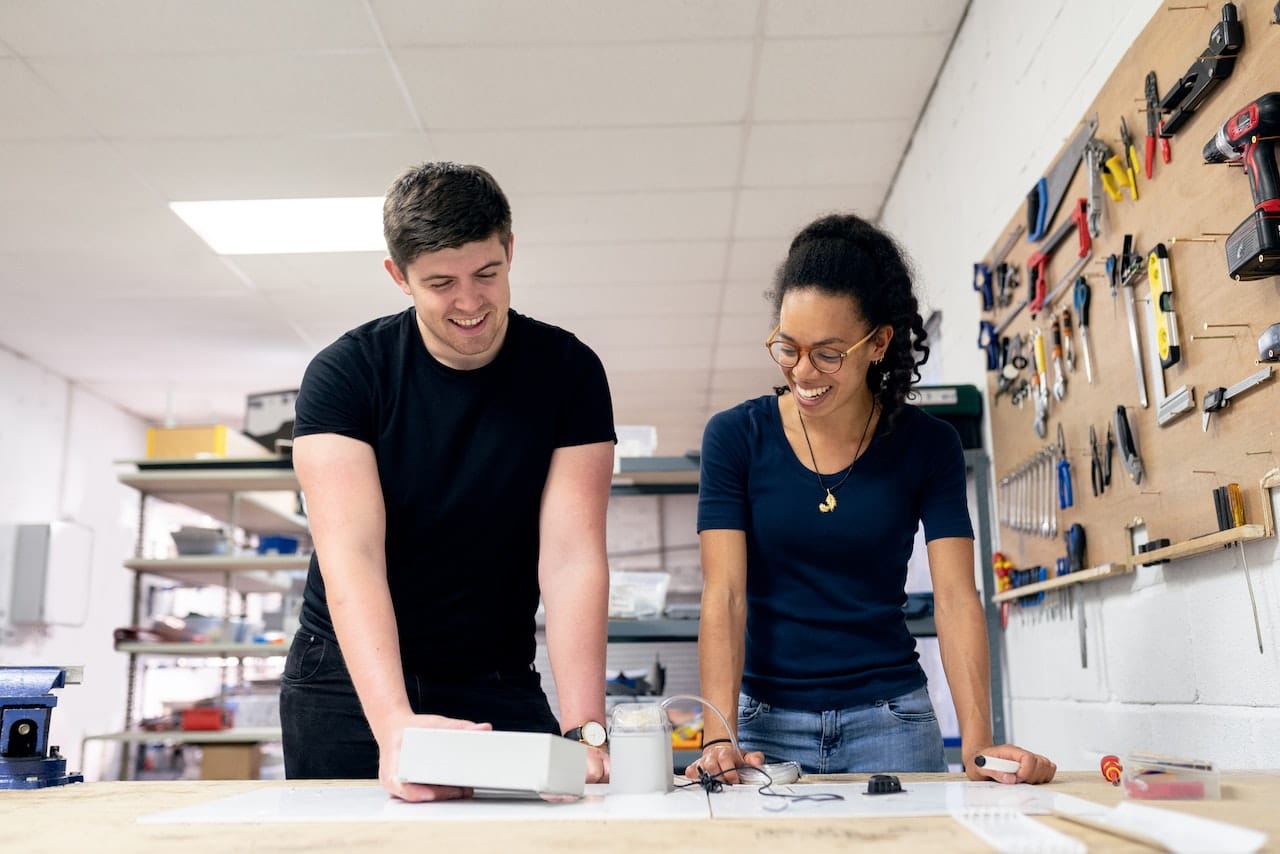Design Thinking is now a “buzz word” in businesses, nonprofits, and social enterprises. Many people think it’s about brainstorming, but it is really much more. To make the most of a Design Thinking project, start with the concepts below and then form a team to take action!
What Defines a Design Thinking Project?
Design Thinking is different from traditional business planning. It rarely focuses on statistics, projections, or complex calculations. It is instead human-centered, which means it focuses on the experiences, behaviors, and thoughts of individuals and small groups of people.
A tenet of Design Thinking is to observe people and then interpret your findings. Come up with a theory about why certain kinds of people behave as they do. Maybe early morning commuters behave one way when they interact with your enterprise, but midday visitors behave differently. What accounts for the difference? Is there a certain problem or opportunity you could address? Might you redesign your outreach to be more effective with each audience?
Notice the focus on the consumer, too. Observations and solutions should emerge primarily from a focus on customers’ perspectives rather than from the organization’s perspective. The organization’s perspective eventually comes into play, especially when deciding how to implement a solution, but the most powerful and meaningful solution is often the one that is designed first to meet the wishes and needs of the target audience. Focus on the why and what of each target audience in order to generate transformational solutions.
What’s an Effective Way to Frame and Tackle a Challenge?
Upon reviewing and interpreting your observations in the field, write a Design Challenge. This is a one-sentence question that asks, “How might we…?” For example, you could ask yourself, your team, and your audiences, “How might we make our message more noticeable and meaningful among busy morning commuters?” or, “how might we welcome visitors who have limited language abilities?” Your Design Challenge question should be linked to the behavior you observe. It should have a certain audience and goal in mind.
An effective Design Challenge often imposes a constraint, too, such as limited time, money, personnel, language, or space. This is a crucial element since constraints stimulate creative problem-solving. Many idea-generation sessions fail because the facilitator asks a question that is too open-ended, such as, “How might we attract more customers?” If there is no constraint, the responses will usually wind up being broad and impractical. A constraint, on the other hand, forces a team to conjure up new approaches that go beyond conventional or idealistic thinking to surmount the real challenge an audience faces.
What Are Some Key Elements to Blend into the Process?
Design Thinking is not only human-centered, but also scrappy, free flowing, and experimental. To make the most of this spirit, blend these elements in your process:
- When starting an observation or idea generation session, first agree with your team about the norms for conversation. These norms should include open-ended thinking (“what if…” instead of “should-we-or-shouldn’t-we”), suspension of judgment, inspiration from observations, and an aim to produce a solution that is desirable, viable, and sustainable. Groups that are quick to judge the rationality or feasibility of an idea usually fall short of their potential. Odd though it may seem, you should resist the urge to comment on whether something could be done. By suspending judgment, you will emerge with better ideas.
- Proceed through iterative designs of possible solutions. Build inexpensive prototypes that you can test on a small scale, observe how people use — or struggle with — your proposed ideas, and make gradual refinements that you can test en route to a more robust solution. After a few rounds of this process, your new solution may be sound enough for you to launch and promote broadly.
- Adopt design principles that are relevant to your field. Such principles might include simplicity, strength, affordability, durability, etc. During your design process, generate a list of principles you could uphold and pursue as you seek and build a solution. Streamline this list to focus on only the most crucial 3-5 principles for your enterprise and your field. Other principles may be important, too, but a small list will help make your process both manageable and meaningful.
A Design Thinking project often cycles through several rounds of observation, problem framing, ideation, iteration, and implementation. The result is a product or service that your community and your enterprise will love!
.


